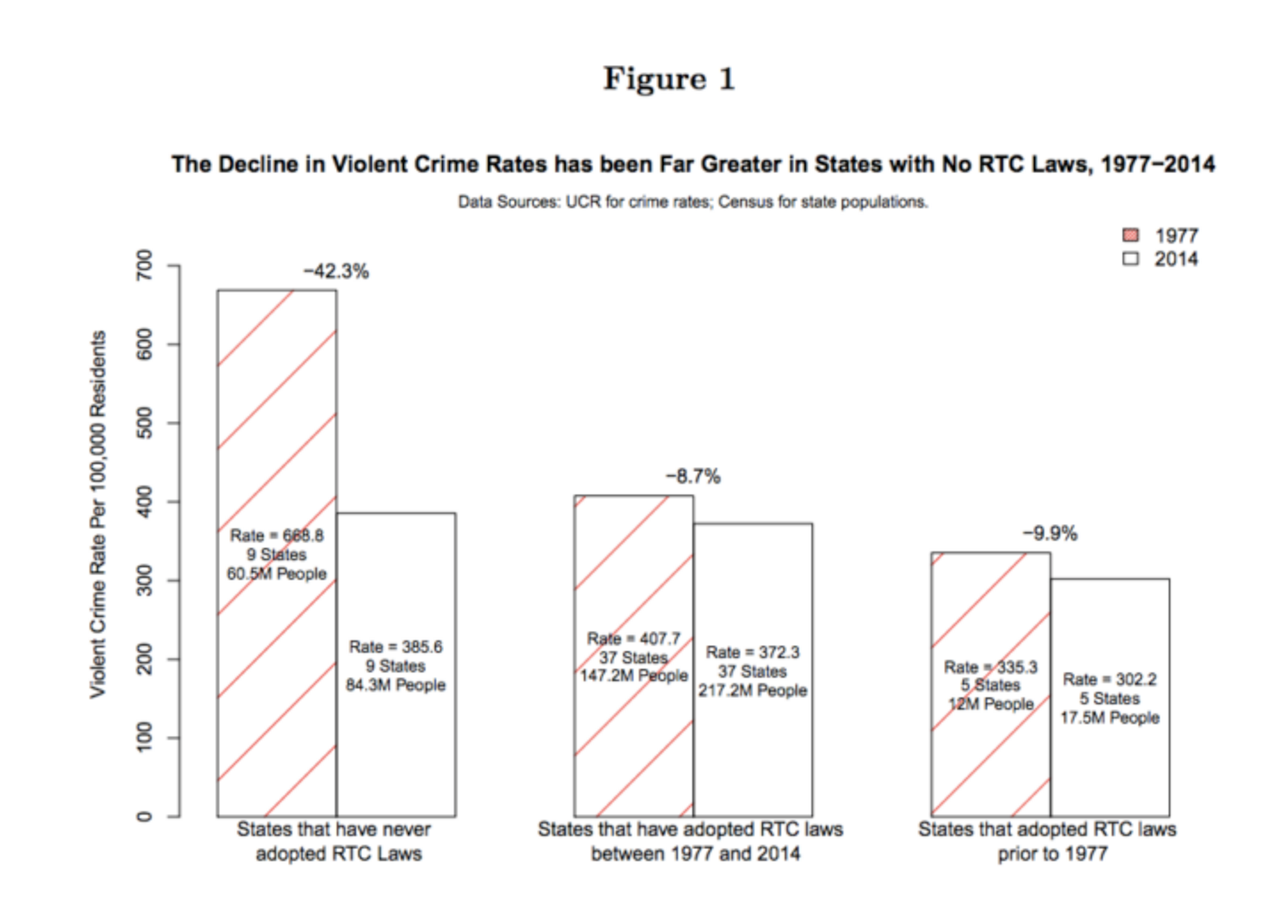There is an almost dogmatic belief among pro-gun groups that more guns in the hands of private citizens will lead to a safer society. “The only way to stop a bad guy with a gun is a good guy with a gun,” Wayne LaPierre, head of the National Rifle Association, said after a man shot and killed 20 six- and seven-year-old children and six adults at Sandy Hook Elementary School in 2012, succinctly summing up this line of thought.
The argument that having guns makes us safer plays to American ideals of independence and personal responsibility, but it’s not just savvy marketing copy conjured out of thin air. It’s based on the work of John Lott, an economist who Peter Moskowitz called a “one-man pro-gun research machine” in the May/June 2017 issue of Pacific Standard.
A prolific researcher, Lott works at a non-profit called the Crime Prevention Research Center, publishing studies that, though rarely peer-reviewed, are often cited by academics, politicians, and pro-gun private citizens. “If you know a statistic or a fact-based argument about how guns save lives, it’s likely, whether you know it or not, you’re citing some of Lott’s work,” Moskowitz wrote.
The argument that more guns means less crime was born out some of Lott’s research from the 1990s, which suggested that states that passed more lenient concealed-carry laws saw a drop in crime rates. However, a new study from the National Bureau of Economic Research that looked at the relationship between gun laws and crime rates over a longer time period found that Lott’s initial theory does not hold up.

The NBER analyzed 33 states that adopted right-to-carry laws—which allow anyone who meets minimal requirements to obtain concealed carry permits—between 1977 and 2014. They found that, 10 years after the laws were passed, violent crime rates actually increased by up to 15 percent. And while it’s true that, nationally, violent crime rates have fallen as right-to-carry laws have proliferated, those drops were not evenly distributed: The decrease in violent crime in states that didn’t adopt right-to-carry laws was four times greater than in those that did.
This new study’s findings are unlikely to sway the most avid proponents of the right to bear arms, however. The gun control debate is not one about pragmatic policies—for those who believe that gun ownership is an American birthright, it’s about patriotic identity and the ability to exercise inviolable rights.





